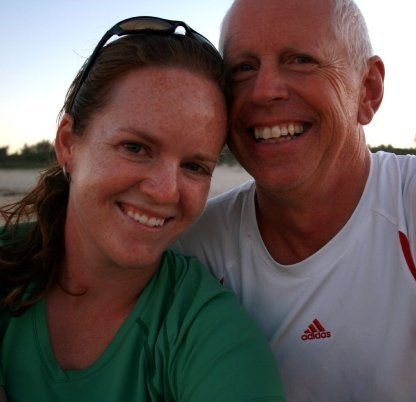The drive west of the highway was beautiful, passing through the cane fields and tiny cane towns of the Pioneer Valley, then up and over the steep mountain at the head of the valley. Subtropical rainforests blanket the top of the range, most of which is protected in the park. We followed the signs to the Broken River and the designated viewing area where you have the best chance of spotting a platypus. It was a very peaceful spot on the calm, clear river, and with cockatoos and azure kingfishers flying around in the trees, it was far from boring. Dozens of freshwater snapping turtles paddled around in the water, some looking to be up to almost a foot long. Also swimming around on the bottom was a wierd fish, maybe 18" long, with the back half resembling an eel. We stood quietly and scanned the water for the telltale bubbles and ripples that give away a platypus's location when they are down diving for food. We searched for a long time and then figured that we were trying at the wrong time of day, as they are apparently most active around dawn and dusk. Ken gave up after half an hour, but I was determined to find one since we drove way out of our way to see them! Sure enough, persistence paid off as an un-turtle-like shape floating on the surface caught my eye, which I quickly recognized as a little platypus. Score! She would float on the surface for 20 seconds or so, then dive down to look for food before reappearing a few metres away a minute later, over and over again. She was much smaller than I had pictured, but just as strange and cute. So there we go - wild platypus in Australia.


After a picnic in the parking lot, we drove back down to the highway and went a little farther before turning east toward our next destination: Cape Hilsborough National Park. Although we've already seen lots of beaches, this one is special because wild kangaroos come down onto the sand to forage for washed up seed pods in the morning and evening. As we pulled into the park and caught a glimpse of the beach through the trees, we recognized it instantly from the cover of our "East Coast Australia" Lonely Planet guidebook, which shows two kangaroos playing on a big flat beach with a very recognizable island in the background. We snagged a spot within feet of the sand and then went down to check it out. The huge crescent of fine sand was bound on each end by forest and rocky volcanic headlands, making for a beautiful and dramatic landscape. We wandered for a while before claiming a patch of sand to read and keep an eye out for long-tailed visitors. A while later, something caught my eye and upon closer inspection, we saw that it was definitely a kangaroo, hopping around the high tide mark looking for dinner. He didn't hang around for long, but we hear that there can be dozens of them around in the morning, so we'll be down to check that out for sure. Kookaburras (Australian kingfishers with a laugh-like call) entertained us from the trees above our campervan as we cooked dinner, and we had a close encounter with a small wallaby that was munching on grass on the lawn by the pool when we went to do our laundry. It was quite the day for wildlife spotting!












No comments:
Post a Comment